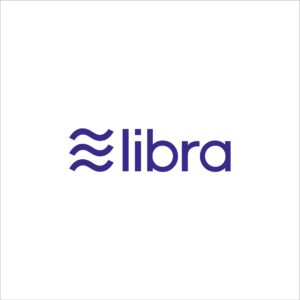
We have deliberately chosen to limit our presentation, for pedagogical reasons, to the four fundamental periods represented by the emergence of Bitcoin, Ethereum, Libra and CBDCs (Central Bank Digital Currency) because no other event (derived or similar project) has had such an impact on the global economy. Here, we present to the readers a possible configuration of the blockchain sector based on a four-part analysis, followed by a concluding proposal.
Time 1: Bitcoin (2008)
The Bitcoin blockchain was originally designed for a single purpose: to create a decentralized, peer-to-peer system for exchanging monetary value, freeing itself from third parties that are the financial institutions.
Admittedly, legally, Bitcoin in most countries is not considered as currency. The European Central Bank (ECB) thus consistently reminds us that the Euro is the only legal currency.
On an economic level, the debate continues to rage over the real status of cryptocurrencies like Bitcoin. The discussion has become classic. Money fulfills three functions: a medium of exchange, a unit of account and a store of value (savings).
 We can argue indefinitely about whether these three criteria are present in the case of Bitcoin (and other global cryptocurrencies). It is true that more and more merchants accept Bitcoin (medium of exchange and unit of account), but it is also true that the “store of value” function has become predominant. Moreover, cryptocurrencies are subject to speculative movements (notably through trading platforms), bringing them closer to the nature of (risky) investments.
We can argue indefinitely about whether these three criteria are present in the case of Bitcoin (and other global cryptocurrencies). It is true that more and more merchants accept Bitcoin (medium of exchange and unit of account), but it is also true that the “store of value” function has become predominant. Moreover, cryptocurrencies are subject to speculative movements (notably through trading platforms), bringing them closer to the nature of (risky) investments.
Time 2: Ethereum (2013)
The Ethereum public blockchain was designed to provide a platform for decentralized applications. The purpose, therefore, being not mainly monetary but functional or “utilitarian”. The ether functions as an access token, allowing decentralized applications (called “smart contracts”) to be deployed and executed. This is how the notion of utility token was born.
In practice, the Ether has followed the fate of Bitcoin: an investment tool, and to a lesser extent a means of payment. The phenomenon of ICOs (initial coin offerings – fundraising by issuing tokens) has only accentuated this trend. Indeed, Ethereum’s only “killer app” to date has been the standardization of the ERC-20 token allowing the issuance and exchange of tokens as part of the ICO. These tokens have fed a secondary market, operating as (volatile) financial instruments.
Ethereum found itself trapped in a paradox: the ether, a token designed as a utility, is used to create effects equivalent to Bitcoin.
This situation is explained by a cost model that is not adapted to the reality of the current economy: each transaction carried out on the network is measured in “gas” and remunerated in Ether, the price of which fluctuates, to the benefit of one or more nodes (machines participating in the network) acting in concert. It is as if users had to pay (and in a volatile currency) for certain terminals of a telephone network for a given call.
This intrinsic constraint de facto limits the economic viability of most decentralized applications.
In addition, there is the well-known problem of network scalability.
As a consequence of this situation, economic actors have preferred to develop so-called private blockchains, which do not require “fee-for-service” payment, the cost of which is borne by all participants and which ensure real scalability. It must be noted that to date, the only real cases of industrial use are deployed on this type of blockchain.
Time 3: Libra (2019)
Libra is precisely a perfect example of a private, or permission-based, blockchain that was designed to “provide the scale, stability and security necessary to support billions of people and transactions around the world”.
What makes it really unique compared to other private blockchains are the following two characteristics:
- This is the first time that a project aims to natively deploy a private blockchain in centralized applications on such a scale (billions of potential users).
- Libra, as a closed community of private actors, claims to be a “stable cryptocurrency that is entirely based on a reserve of real assets”.
 This equation is unprecedented; the application infrastructure dimension is a positive signal for the blockchain sector (and more generally for the players in the digital economy). As much, the monetary ambition displayed by Libra poses a major problem for States (and Central Banks), which fear being deprived of their monetary sovereignty.
This equation is unprecedented; the application infrastructure dimension is a positive signal for the blockchain sector (and more generally for the players in the digital economy). As much, the monetary ambition displayed by Libra poses a major problem for States (and Central Banks), which fear being deprived of their monetary sovereignty.
Of course, there are other stable cryptocurrencies, or “stablecoins”, all issued via a public blockchain (unlike Libra); none, however, has raised any real concerns, their effect being limited.
Libra is the first stablecoin with a global dimension and none of the existing legal instruments have provided a framework for such a scenario. Indeed, it is relatively easy to regulate current issuers of stablecoins, for example by subjecting them to the status of electronic money institutions (like Paypal).
FINMA (the Swiss financial regulator) has already stated that Libra should at least become a payment institution. But in reality, Libra, by its size, is intended to be more like a World Central Bank, and there is no regulation there. The case is completely new.
If we push the reasoning to the end, the worst nightmare for the United States would be to see the value of their national currencies defined by the Libra, because its adoption would far exceed that of the currencies represented in its reserve (notably the US Dollar and the Euro).
The role of the Central Banks would be reduced until they become subservient to the Libra reserve!
Time 4: CBDCs (2020?)
Some Central Banks quickly reacted. Large countries, such as China, have announced the launch of a cryptocurrency issued by their Central Bank, while micro-States are already experimenting with a virtual currency, often correlated to the dollar.
From the point of view of States, the advantages of these cryptocurrencies are obvious: reduction of the costs of issuing currency, traceability of transactions and real-time control of the economy.
From the users’ point of view, CBDCs allow the emergence of a payment method that is both legal and interoperable with the “industry 4.0“. Fiduciary (FIAT) money is not “compatible” with decentralized applications (particularly financial) and new services such as AI and IoT, which will increasingly be operated via blockchains (examples: future shared autonomous cars or remote control of a 3D printer).
Of course, the associated risks are equally obvious, particularly in terms of privacy (the Big Brother spectrum), and the guarantees provided to citizens will depend on the political systems concerned.
For a More Balanced Waltz
With the emergence of CBDCs (desirable for the industry 4.0), it is necessary to question the relevance of a monetary purpose for existing blockchains. In any case, the debate must be held.
For the sake of clarity, it is useful to refer to the classification proposed by FINMA for tokens.
FINMA distinguishes between:
- Payment tokens (subject to anti-money laundering obligations)
- Utility tokens (unregulated)
- Investment tokens (treated and regulated as financial products)
In the absence of CBDC, confusion has occurred mechanically. Payment tokens (such as Bitcoin) behave like investment tokens, and utility tokens like payment tokens and/or investment tokens (ICOs).
Some regulators have, involuntarily, contributed to this confusion by qualifying tokens as utility tokens, which are in fact investment tokens, at least from an economic point of view.
This is the case when the token, at the time of its issuance, cannot be used for anything other than an investment function (to be resold and traded on a trading platform). FINMA and the SEC quickly considered such tokens as investment products.
France, in adopting the “Pacte Law” (Loi Pacte), did not go that far, considering itself bound by a formal definition of financial securities imposed by European law (and confirmed by ESMA, the European financial regulator, it should be noted).
 However, France had a national regime (intermediaries in “miscellaneous goods”) flexible enough to deal with tokens with no utility other than a financial one, according to a conception similar to that of the Swiss and American regulators. Finally, it opted for a compromise (commendable given the prevailing confusion) of an ad hoc regime (Pacte Law), where “service providers on digital assets” (PSANs) are regulated in the same way whether they are payment tokens or utility tokens.
However, France had a national regime (intermediaries in “miscellaneous goods”) flexible enough to deal with tokens with no utility other than a financial one, according to a conception similar to that of the Swiss and American regulators. Finally, it opted for a compromise (commendable given the prevailing confusion) of an ad hoc regime (Pacte Law), where “service providers on digital assets” (PSANs) are regulated in the same way whether they are payment tokens or utility tokens.
How then to define a healthy distribution of the roles of each typology of blockchain (monetary, utility and investment)?
Simply put, the monetary function in the strict sense should naturally be exercised by Central Banks, which are the only bodies in a position to apply a monetary policy in the general interest (setting the key rate, controlling inflation, etc.).
These State cryptocurrencies will be the preferred means of payment to access decentralized applications and/or tokenized financial products (investment tokens).
As an illustration, Facebook could give up the monetary dimension of Libra and assign it a utilitarian function in the fight against fake news and fake profiles. Thus, users of its social networks would buy Libra tokens in CBDC to authenticate shared content and identify its authors.
As for Bitcoin, it will never be able to compete with CBDCs, especially when they become interoperable. This does not mean that Bitcoin cannot be used as a means of exchange if the parties concerned agree, but its primary function will ultimately remain that of a store of value, a savings product, calling for a minimum level of investor protection.
 Thibault Verbiest is Head of Regulatory Affairs for Europe & Africa Diginex, a blockchain technology and digital assets services and advisory company. Mr. Verbiest is a specialist Fintech lawyer with two decades of experience in the field. He is the co-author of several books on fintech and crypto-finance regulation and he acts as a blockchain policy expert with both the European Blockchain Observatory and Forum and the World Bank. He also teaches Fintech and crypto-finance regulation at both the Solvay Business School and the Skema Business School. Mr. Verbiest joins Diginex from DS Avocats, where he created a department dedicated to fintech, digital banking and crypto-finance. Before DS Avocats, he was a partner at Gaulle Fleurance where he advised the Belgian federal government on its policymaking approach towards the internet. More recently, he participated in the blockchain policymaking of the French government, which included working on the first draft of the PACTE crypto-assets legislation
Thibault Verbiest is Head of Regulatory Affairs for Europe & Africa Diginex, a blockchain technology and digital assets services and advisory company. Mr. Verbiest is a specialist Fintech lawyer with two decades of experience in the field. He is the co-author of several books on fintech and crypto-finance regulation and he acts as a blockchain policy expert with both the European Blockchain Observatory and Forum and the World Bank. He also teaches Fintech and crypto-finance regulation at both the Solvay Business School and the Skema Business School. Mr. Verbiest joins Diginex from DS Avocats, where he created a department dedicated to fintech, digital banking and crypto-finance. Before DS Avocats, he was a partner at Gaulle Fleurance where he advised the Belgian federal government on its policymaking approach towards the internet. More recently, he participated in the blockchain policymaking of the French government, which included working on the first draft of the PACTE crypto-assets legislation
 Jonathan J. Attia is Chief Scientist at Lapsechain (CH) and Director of the DL4T Observatory at Université Côte d’Azur (FR). Jonathan is co-inventor of numerous international patents in the field of digital authentication and data encryption. R&D engineer for 13 years in the software industry (cloud computing, search engine, intelligent video surveillance, algorithmic trading), he is working on a new blockchain data-centric protocol to ensure end-to-end data privacy.
Jonathan J. Attia is Chief Scientist at Lapsechain (CH) and Director of the DL4T Observatory at Université Côte d’Azur (FR). Jonathan is co-inventor of numerous international patents in the field of digital authentication and data encryption. R&D engineer for 13 years in the software industry (cloud computing, search engine, intelligent video surveillance, algorithmic trading), he is working on a new blockchain data-centric protocol to ensure end-to-end data privacy.

